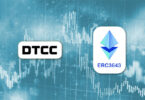Today the Bank of Canada, Canadian stock exchange TMX, Payments Canada and Accenture announced that clearing and settlement of securities on-ledger is viable. The proof of concept (PoC) tokenized both cash and stocks to complete the equity settlement instantly.
Project Jasper has been in the works since early 2016 and is based on R3’s Corda technology, so strictly speaking it uses Distributed Ledger Technology (DLT) not blockchain.
“This proof of concept shows that it is possible to deliver payments in a way that has never been done before – by directly swapping cash from buyers to sellers, resulting in instant settlements,” said Gerry Gaetz, President and CEO of Payments Canada.
The immediate settlement of transactions would enable organisations to reduce counterparty risk and free up collateral.
As with most Corda applications, only participants in a transactions are able to see the transaction and its history.
“Maintaining privacy, as well integrating other assets onto the same ledger as payments, would provide important benefits for the financial system from the use of a DLT-based wholesale payment system,” said Carolyn A. Wilkins, Senior Deputy Governor at the Bank of Canada.
John Velissarios, Accenture’s Blockchain Technology & Security Lead, said: “Canada is the first developed market to focus on a full-cycle, on-ledger, trade-settlement system ― laying the groundwork for the Canadian financial market infrastructure to collaborate with similarly positioned global partners to derive new, mutually beneficial opportunities and benefits of DLT.”
Project phases
This is phase three of the PoC. After the second phase the conclusion was that DLT probably did not offer net benefits over the existing centralized systems because the current wholesale payment systems function quite efficiently.
However, they could see that a DLT could offer advantages to the broader group of participants because of reduced back-office reconciliation.
Reconciliation benefits
Based on discussions Ledger Insights has had with other groups, the reconciliation benefits can only be gained if there are bank accounts dedicated just to the settlement of say TMX transactions.
For example, recently SWIFT did a PoC. Contrary to popular belief, SWIFT’s current system offers almost instant settlement. But companies see delays because the recipient banks delay posting the incoming funds to their client’s accounts.
The SWIFT blockchain PoC encountered several difficulties. The biggest issue that was not publicly mentioned was the reconciliation problems. Specifically NOSTRO accounts which are used for transactions between foreign banks, tend to include other transactions, not just SWIFT payments. The fact that these transactions are mixed in meant the loss of the reconciliation benefit from using a blockchain.






